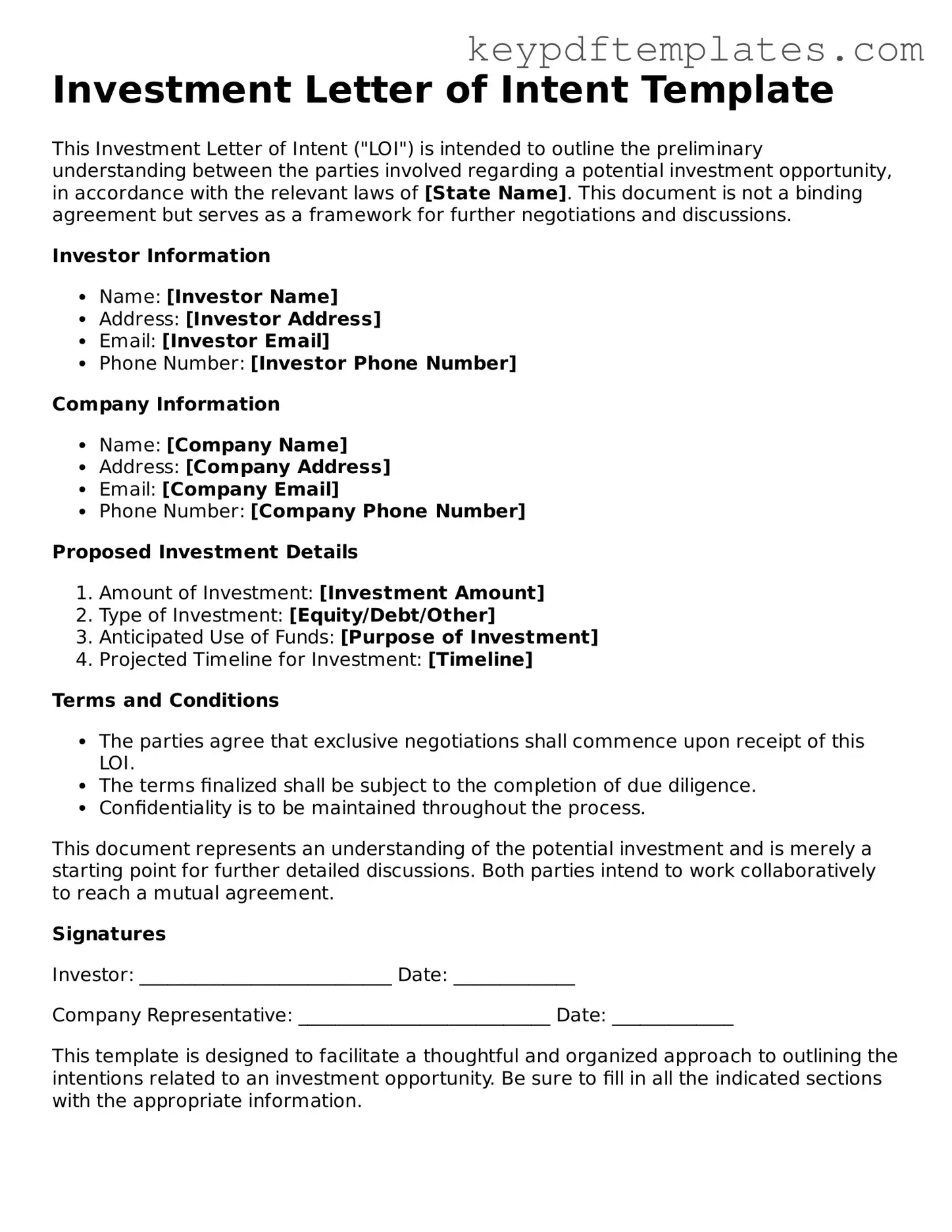Printable Investment Letter of Intent Template
An Investment Letter of Intent form is a document that outlines the preliminary terms and conditions of a potential investment. This form serves as a starting point for negotiations between investors and companies seeking funding. By clarifying intentions, it helps both parties understand their commitments before final agreements are made.
Modify Document Online
